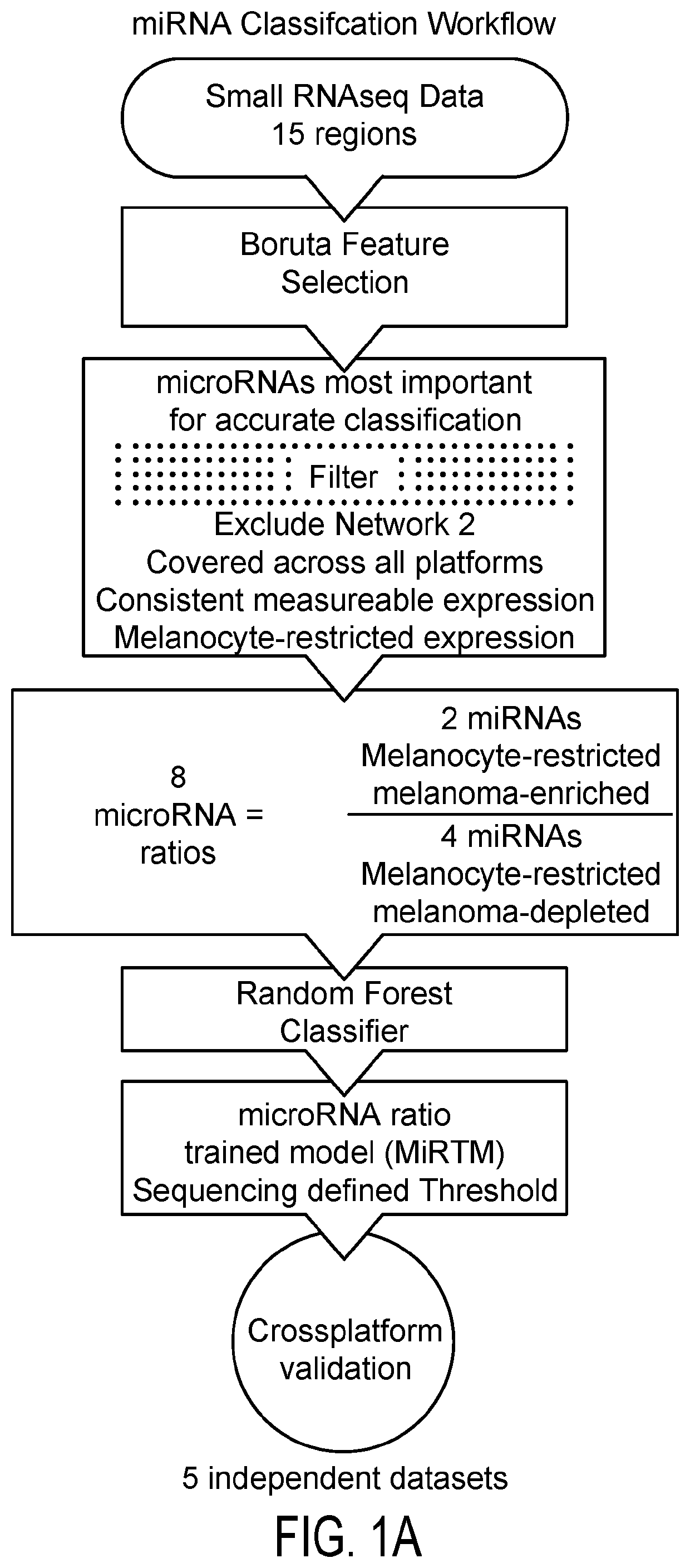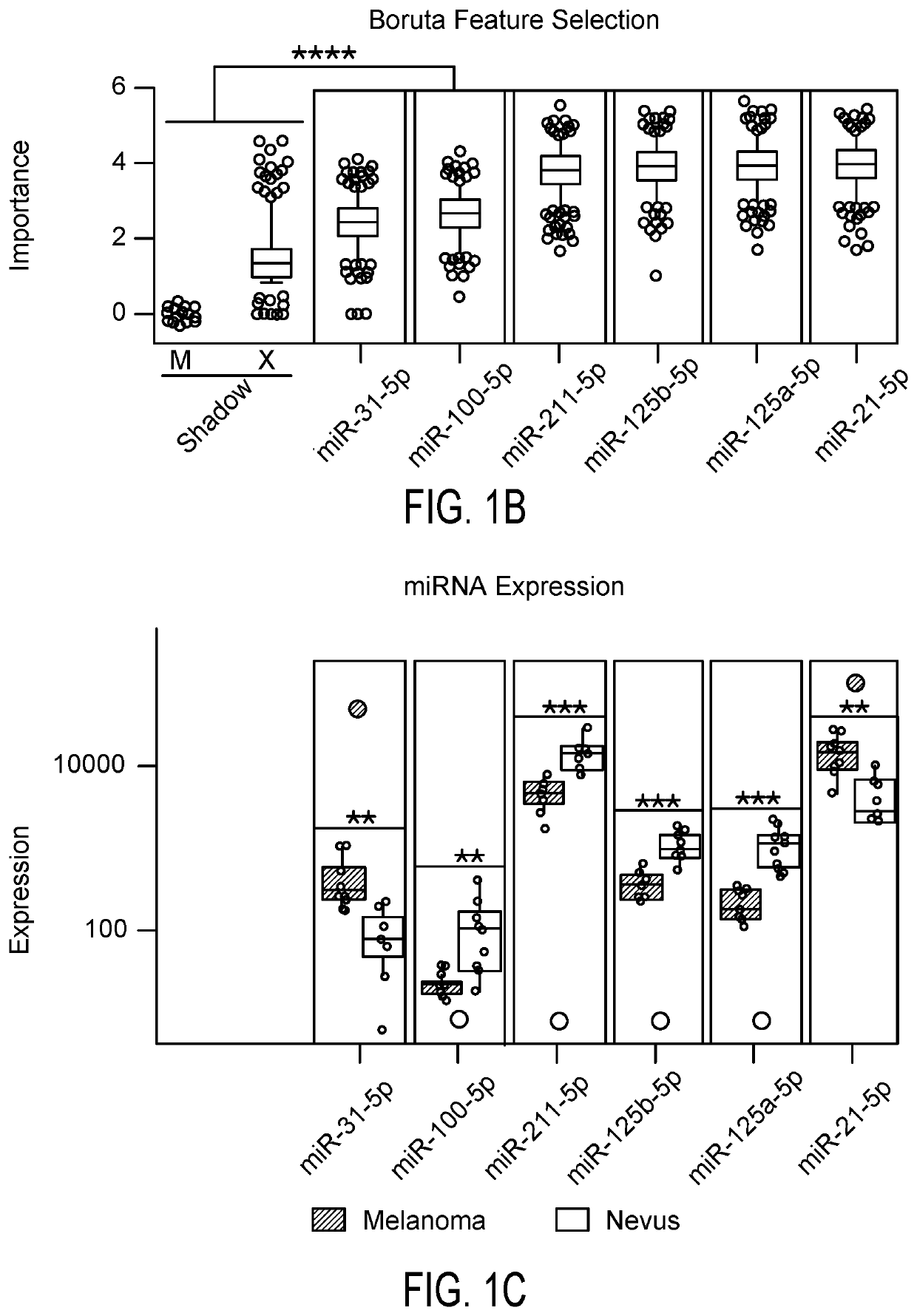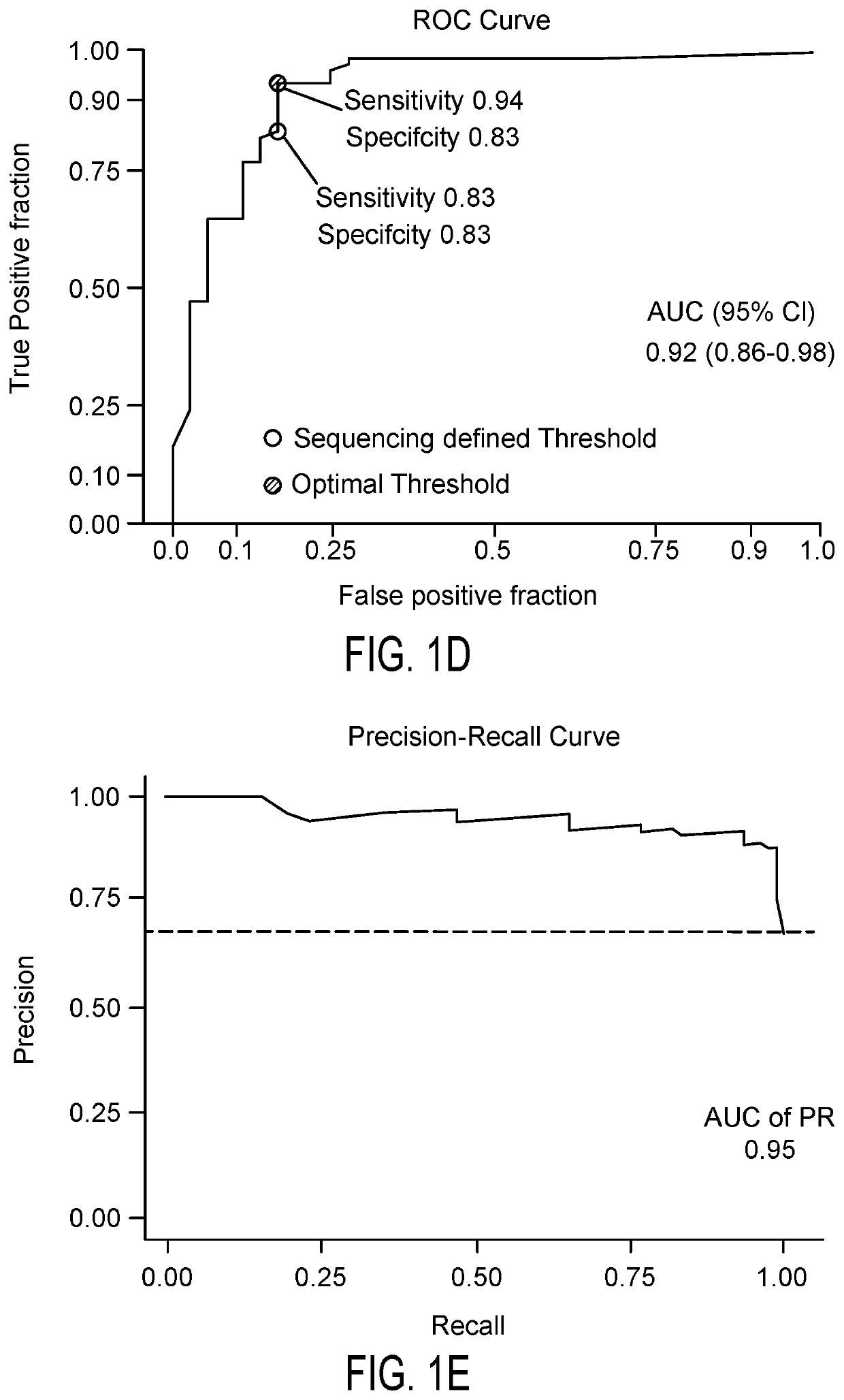Non-Invasive Classification of Benign and Malignant Melanocytic Lesions Using MicroRNA Profiling
a melanocytic and non-invasive technology, applied in the field of non-invasive classification of benign and malignant melanocytic lesions using microrna profiling, can solve the problems of reducing the reproducibility of mirna signatures across studies, limiting clinical use of mirna signatures derived by prior art efforts, etc., to achieve optimized models for melanoma diagnosis, reduce noise in dataset, and amplify signal
- Summary
- Abstract
- Description
- Claims
- Application Information
AI Technical Summary
Benefits of technology
Problems solved by technology
Method used
Image
Examples
example 1
-Learning Classifier Trained with MicroRNA Ratios to Distinguish Melanomas from Nevi
[0100]In this study, it was sought to determine whether a miRNA signature can reliably distinguish malignant from benign melanocytic lesions across both published and independently generated datasets.
Methods
Meta-Analysis
[0101]For meta-analyses all datasets in public databases that contained miRNA profiling for both primary melanoma and nevus samples for comparison were utilized (GSE19229, GSE36236, GSE24996, GSE62372, GSE35579, GSE34460, and E-MTAB-4915). The top differentially expressed miRNAs for each dataset were determined using an FDR cutoff of 0.05 using either microarray and qPCR array data or DeSeq2. To determine overlap, only those miRNAs for which probes were included in every detection platform were considered. Overlap was plotted using the UpsetR package in R.
Clinical Specimens and Histopathologic Assessment
[0102]A training cohort of melanomas with an intact adjacent benign nevus constitu...
PUM
 Login to View More
Login to View More Abstract
Description
Claims
Application Information
 Login to View More
Login to View More - R&D
- Intellectual Property
- Life Sciences
- Materials
- Tech Scout
- Unparalleled Data Quality
- Higher Quality Content
- 60% Fewer Hallucinations
Browse by: Latest US Patents, China's latest patents, Technical Efficacy Thesaurus, Application Domain, Technology Topic, Popular Technical Reports.
© 2025 PatSnap. All rights reserved.Legal|Privacy policy|Modern Slavery Act Transparency Statement|Sitemap|About US| Contact US: help@patsnap.com



